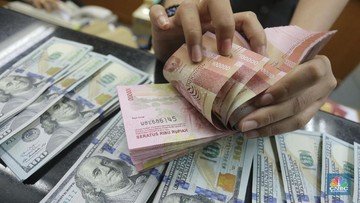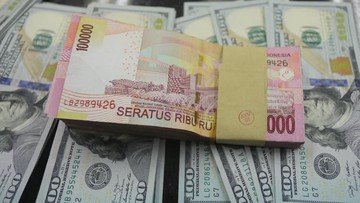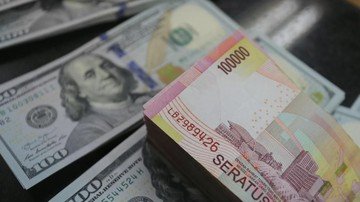Asian Currencies Already Strengthened, Rupiah Still Missing

#JAKARTA The exchange rate of the rupiah against the US dollar (US) weakened again at the reference exchange rate. The US dollar also broke through the level of Rp. 14,000.
On Tuesday (02/12/2019), the Jakarta Interbank Spot Dollar Rate / Jisdor reference rate was at Rp 14,088. The rupiah weakened 0.66% compared to the previous day's position and touched the weakest point since late January.
The rupiah has depreciated 4 consecutive days at the reference rate, and during this period the decline reached 1.01%. However, compared to the initial position of the year, the rupiah still gained 2.71%.
Not only in the reference exchange rate, the rupiah also weakened in the spot market. At 10:10 WIB, US $ 1 was equal to Rp. 14,070 where the rupiah weakened by 0.25%.
Even though the majority of Asian currencies are able to strengthen before the US dollar. Apart from the rupiah, only Indian rupees, Japanese yen and Malaysian ringgit were weakened.
With a depreciation of 0.25%, the legitimate rupiah becomes the weakest currency in Asia. For business weakening before the US dollar, the rupiah becomes the winner

After running hard for this week, the US dollar took a breath. At 10:18 WIB, the Dollar Index (which measures the greenback's position in front of six major currencies) was slightly down 0.04%. Even so, this index still strengthened 0.99% in the past week and for the past month the gain reached 1.41%.
Investors who have benefited from the US dollar are tempted. Profit grabs the currency of Uncle Sam's country, a correction that is still relatively healthy.
In addition, investors also began to take risks because there were positive signals from US-China trade negotiations. During this week, the US delegation was in Beijing to conduct a trade dialogue. Washington remains optimistic the US-China will reach an agreement towards peace of trade.
"It seems like that, of course," Kellyanne Conway, the White House Senior Advisor, said when answering the question of whether the US-China trade agreement was getting closer.
To add optimism, Conway stated that President Trump might still meet with Chinese President Xi Jinping. Trump, according to Conway, wants to make a deal with China that is fair to US people and interests.
Hopefully positive news like this continues to emerge so that the peaceful hopes of US-China trade do not fade. Because this hope will be a powerful mood booster for Asian financial markets.

However, why does the rupiah move still seem heavy? What is the burden on the currency of the country?
It seems that the rupiah still bears the burden of the release of the Indonesian Balance of Payments (NPI). In the fourth quarter of 2018 the NPI recorded a surplus of US $ 5.42 billion, but because of the continuing deficit in the previous 3 quarters, the NPI throughout 2018 remained minus US $ 7.13 billion. The NPI deficit in 2018 has been the deepest since 2013.
While the Current Account Deficit / CAD deficit in the fourth quarter of 2018 was 3.57% of Gross Domestic Product (GDP). This has been the deepest deficit since quarter II-2014.
Throughout 2018, the current account deficit was still below 3% of GDP, exactly 2.98%. But this is also the worst record since 2014.
The NPI describes Indonesia's external balance, how much foreign exchange enters and exits. If it is a deficit, more foreign exchange will come out than those who enter. This means that more rupiah is 'burned' to be exchanged into foreign exchange so that when the balance of payments deficit becomes reasonable when the rupiah weakens.
Moreover, the current account continues to record deficits, even deeper. The current account describes foreign exchange from exports and imports of goods and services, foreign exchange that lasts longer.